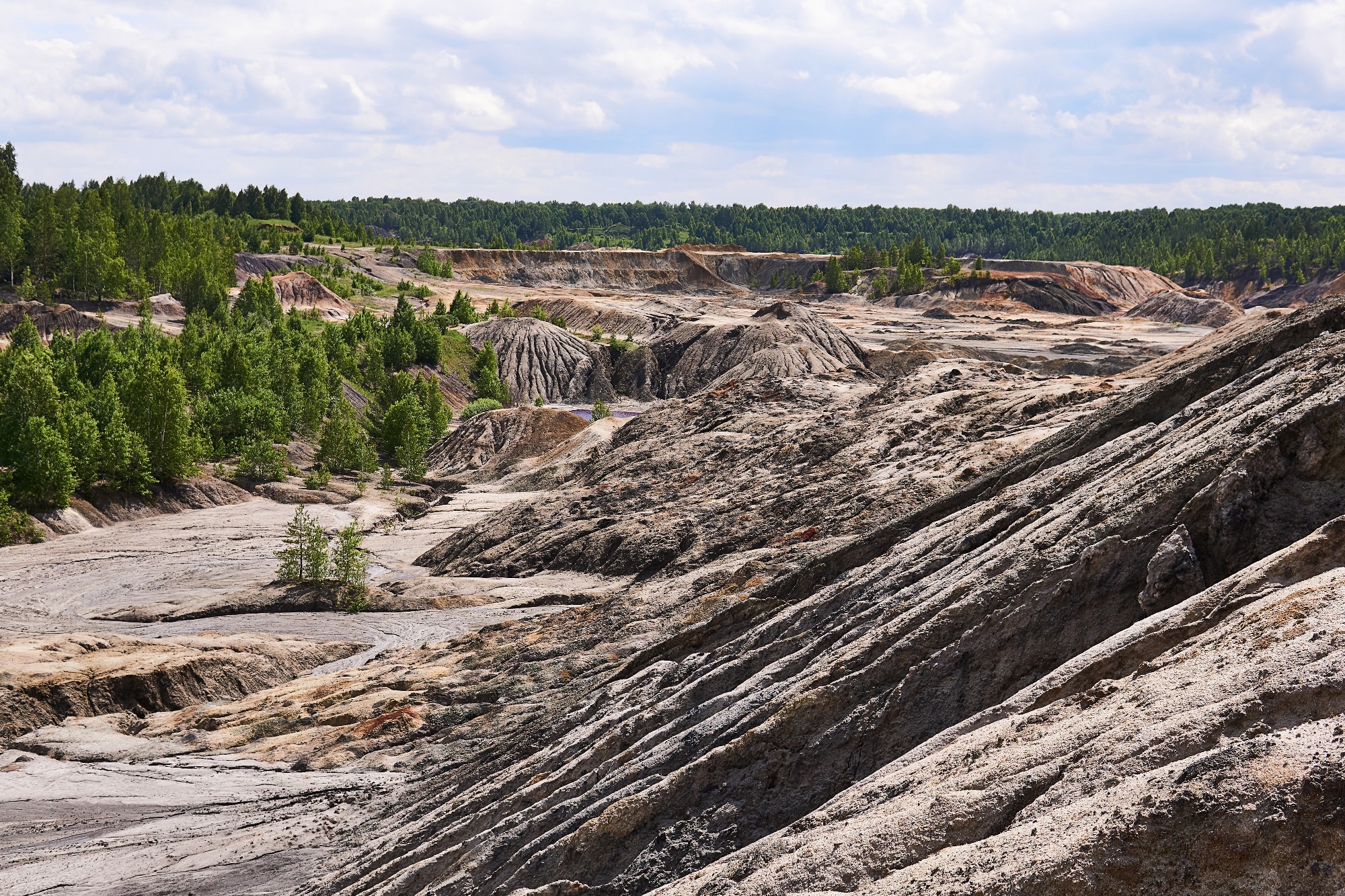Researchers have created a nonlinear viscoelastic–plastic (NVEP) creep model that accurately predicts how mined ground continues to settle over time. By integrating genetic algorithms and FLAC3D simulations, the study identifies when post-mining sites are stable enough for safe infrastructure construction.

Study: A prediction method for long-term surface subsidence considering the mining-induced stratum creep effect and its application. Image Credit: Greens and Blues/Shutterstock.com
The researchers introduced a nonlinear viscoelastic-plastic (NVEP) model to predict long-term surface subsidence caused by mining activities. Their study, published in the journal Scientific Reports, focused on understanding stratum creep and its impact on ground stability during and after mining. The aim was to enhance subsidence prediction accuracy and facilitate long-term (time-dependent) deformation analysis.
The Challenge: Long-Term Surface Subsidence from Underground Mining
Mining-induced subsidence poses serious geotechnical risks, especially in areas with extensive underground coal extraction. In China, where more than 80 % of coal comes from underground operations, mining often leaves behind empty voids, or goafs, that gradually collapse. As the overlying rock layers settle, the ground surface sinks, forming funnel-shaped depressions. These shifts can damage infrastructure, disrupt groundwater flow, and reduce soil quality - making sustainable mining more difficult.
Traditional models like Knothe or Boltzmann time-function methods offer short-term predictions but fall short when applied to long-term deformation in complex geological settings. More recent approaches use numerical simulations that incorporate the viscoelastic and viscoplastic behavior of rock masses, offering a more realistic picture of how the ground settles over time.
Methodology: Modeling Creep with the NVEP Approach
The new NVEP model captures three distinct stages of rock deformation:
- Decaying creep
- Steady-state creep
- Accelerated creep
It builds on the classic Burgers model by adding a stress-dependent threshold and a nonlinear viscoplastic component based on the Mohr–Coulomb failure criterion. A new "creep index" parameter was introduced to better reflect the rate of deformation during the accelerated creep phase.
Three-dimensional constitutive equations were derived and implemented in FLAC3D using a user-defined module (UDM).
To calibrate the model, the researchers applied a genetic algorithm (GA) to optimize parameters using data from a nearby mining site with similar geological conditions. Due to the absence of direct monitoring at the target site, they constructed a 3D model based on regional stratigraphy and geotechnical properties (e.g., sandstone, mudstone, and coal). The boundary conditions simulated realistic constraints: fixed bases, lateral restrictions, and a free surface, with gravity set at 10 m/s2.
The GA optimization began with 24 initial parameter sets. Over 123 days, the model iteratively refined these until the difference between observed and simulated subsidence dropped below 0.01. Final parameters were then used to simulate surface deformation over a 15-year period following mining activity.
Simulation Results: How Ground Settles Over Time
The model revealed a three-phase pattern of ground movement, with subsidence following an exponential decay:
- Initial Rapid Settlement (0–2 years): The most significant deformation occurred here, reaching a peak vertical displacement of 1521 mm - closely matching field data (1411 mm).
- Transitional Phase (2–3 years): Subsidence slowed as the overburden strata began to stabilize.
- Long-Term Stabilization (after 4 years): Vertical movement tapered off, with annual changes dropping below 1 mm.
Horizontal displacement showed a double-trough pattern: one behind and one ahead of the longwall mining face. Both stabilized within four years, with post-stabilization displacements under 1 mm, indicating minimal risk to surface structures.
Model validation showed excellent accuracy, with an R2 value above 0.95, reinforcing its reliability for long-term deformation analysis.
Infrastructure Applications: Railway Construction Over Goafs
One key application explored in the study was railway construction across post-mining areas. Using the NVEP model, researchers assessed track deformation parameters for a proposed railway passing over five longwall faces.
According to China’s Code for Coal Pillar Retention and Underwater, Building, Railway and Main Shaft Coal Mining and TG/GW102-2019 Maintenance Rules, the acceptable deformation limits for Class III railways are:
- Gauge: 5.74 mm
- Cross Level: 8.61 mm
- Alignment: 40 mm
Simulations showed that five years after mining:
- Gauge deviation: 0.4 mm
- Cross level: 0.6 mm
- Longitudinal level: 0.8 mm
- Alignment: 0.64 mm
All were well within allowable thresholds, suggesting that construction could safely begin five years post-mining. However, the authors caution that these findings are based on simulation, not direct field measurement, and should serve as guidance rather than definitive approval for construction.
Toward Safer, Smarter Post-Mining Development
This research offers a significant step forward in predicting and managing mining-induced subsidence. By combining the NVEP creep model with numerical simulation and genetic algorithms, it provides a powerful tool for understanding long-term ground behavior. Its implementation in FLAC3D and strong alignment with field data make it a valuable asset in geotechnical engineering.
The authors recommend further measures to reduce subsidence risk, such as backfilling goafs and limiting single-seam mining thickness. These practices can help reduce surface deformation and shorten the waiting period before infrastructure development.
Looking ahead, the team suggests applying this approach to other subsurface activities like tunneling and underground storage. Integrating real-time monitoring and machine learning could further improve adaptability and prediction accuracy.
Journal Reference
Liang, Z., & et al. (2025). A prediction method for long-term surface subsidence considering the mining-induced stratum creep effect and its application. Sci Rep 15, 38968. DOI: 10.1038/s41598-025-22801-w, https://www.nature.com/articles/s41598-025-22801-w
Disclaimer: The views expressed here are those of the author expressed in their private capacity and do not necessarily represent the views of AZoM.com Limited T/A AZoNetwork the owner and operator of this website. This disclaimer forms part of the Terms and conditions of use of this website.